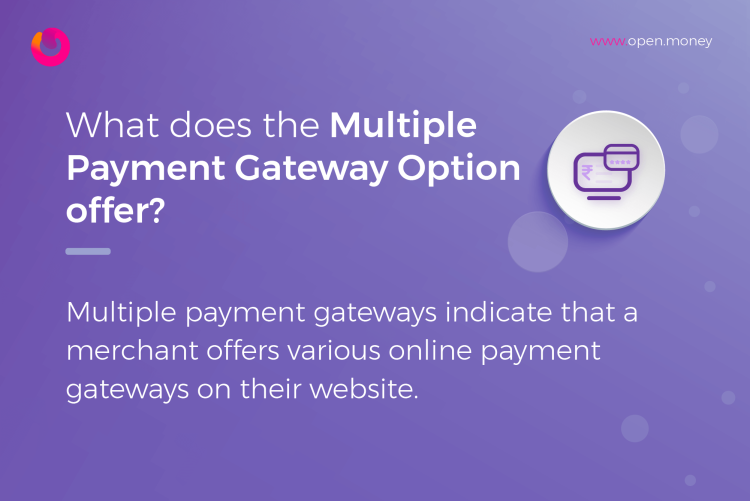What are the pros and cons of having multiple payment gateways on your website?
 Joseph Stencilavose
Joseph StencilavoseTable of contents
What is Multiple Payment Gateways?
A payment gateway is a technology that collects and transfers payments securely from the customer to the merchant or business. Multiple payment gateways indicate that a merchant (YOU) offers various online payment gateways on a single website. And by integrating them, your business can provide higher customer satisfaction and collect instant settlements.
Why use multiple payment gateways?
Multiple payment gateways come with an assurance that if any online payment gateway is experiencing a low success rate or downtime, customers can use an alternative payment method! Thereby increasing the rate of successful transactions for your business.
The Pros of having Multiple Payment Gateways
1. Increases customer satisfaction For a business, there’s nothing better than achieving customer satisfaction. And by offering multiple payment gateways, you can build a strong trust factor between your business and customers.
2. Boosts sales As a business, you can make small changes to take a plunge in the global marketplace. Research suggests that on average, 68.63% of online shopping carts are abandoned before purchases are completed. But 63% of those are recoverable with the right set of offerings.
And enabling multiple payment gateway options is one of them.
Generally, for popular e-commerce websites, location-based shopping isn’t a problem. So customers can pick products of their choice and get them delivered at any given time. But a single payment gateway isn’t enough to process payments from different regions. For collecting payments from customers, merchants offer multiple payment gateways on the platform.
3. Helps run payments smoothly Technology influences most parts of our life. So we also need to have alternate solutions for business in place to avoid any technical or network problems that come our way, as it’s plausible for payment gateways to experience some downtime too. So if one payment gateway fails to process payments successfully or doesn’t function properly, the customers can always move to another payment gateway.
4. Administers analytical data Every payment gateway offers a unique database to the seller. And since the relevant data differs, it serves a different purpose for businesses. It helps merchants make better decisions and improve sales.
The Cons of having multiple payment gateways
1. More payment gateways equal more processes Integrating multiple payment gateways is better for businesses but includes different levels of integrations. And you know what this means, don’t you? It’s time-consuming and sometimes may cause issues after integration. .
2. It’s expensive! Setting up multiple payment gateways can cost a fortune. And the amount may increase depending on how much you spend on tracking or processing fees. Businesses often try to avoid such situations by enabling combined payment services. It essentially means that the customer can choose to pay for the products/ services in part credit and part cash.
3. Includes extensive analytical data This one depends on your accessibility to resources and bandwidth. As a growing business, you will need to adopt multiple payment gateways to collect your payments smartly. But this includes overseeing all kinds of analytical data. It is taxing and requires a separate reporting system to look after them.
4. Requires a collector failover plan Integrating multiple payment gateways means planning about collector failover. Say, payment gateway 1 fails in processing a payment. What’s the next move? The merchant needs to look at how to go about redirecting the customers. Do businesses directly request the customers to head to payment gateway 2 or 3?
This process will require some solid research as it may affect the conversion rates too. So businesses need to carefully think it through to decide on the best redirection source to reduce the number of failed transactions.
5. Includes more operational challenges & resources Setting up multiple payment gateways on the website may cause far too many operational challenges.
One such scenario – when the amount is debited, but the transaction isn’t processed!
This includes back and forth, and that’s where businesses need an all-hands-on-deck mindset. Moreover, you will need more IT development resources to see the operations through. And since the gateways have complicated integration processes, there may be more failures than usual. Further, pushing businesses to employ more people to ensure that the gateways function well.
Subscribe to my newsletter
Read articles from Joseph Stencilavose directly inside your inbox. Subscribe to the newsletter, and don't miss out.
Written by

